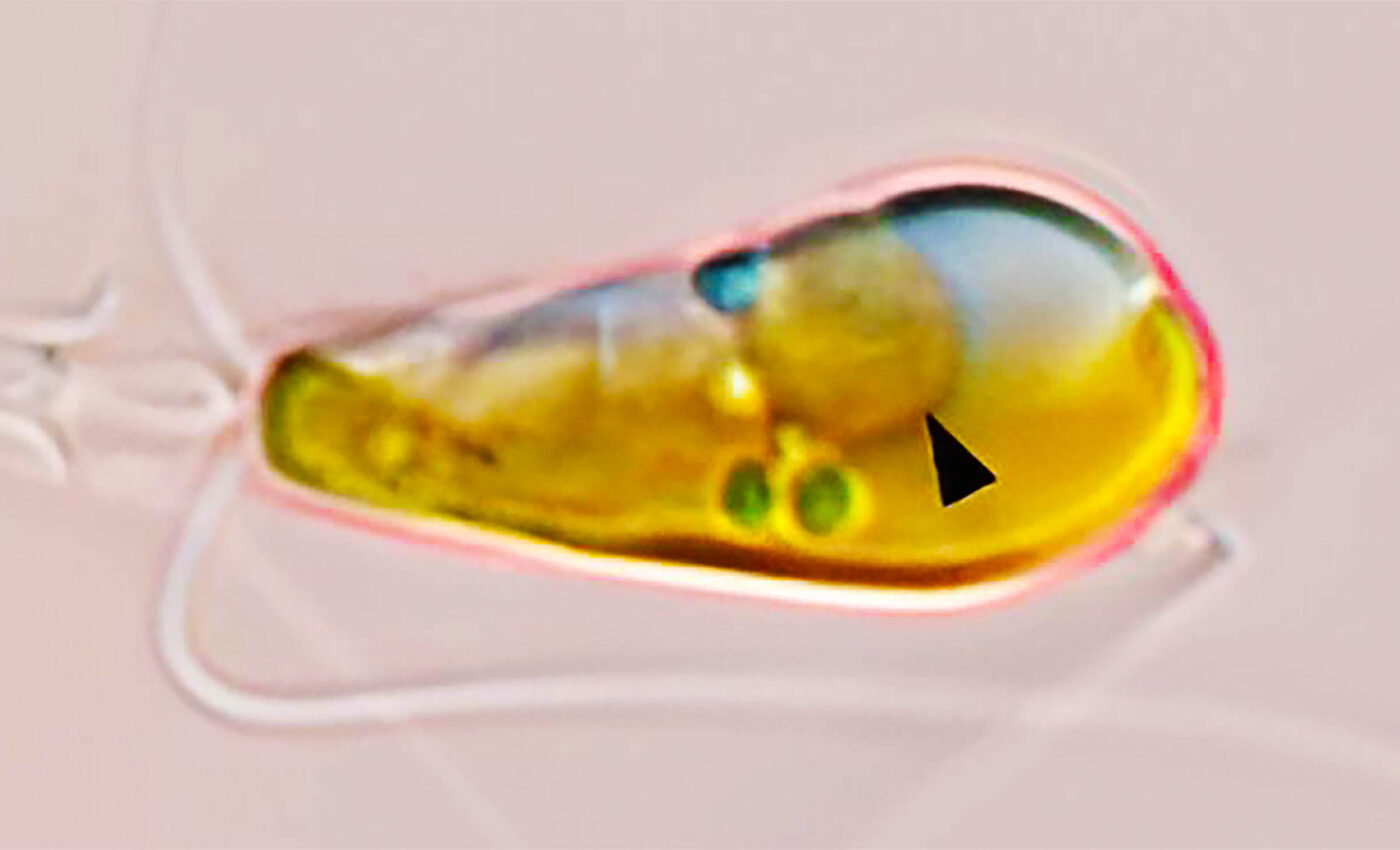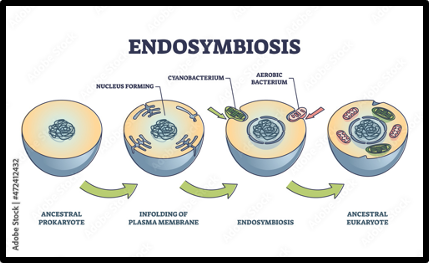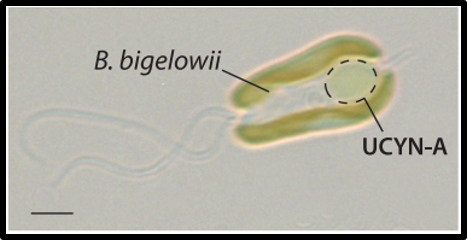

Cosmox Blogs
Nitroplast: A Breakthrough in Nitrogen Fixation
We often think of our eukaryotic cells as highly efficient, self-sufficient factories that can perform any function that needs doing. However, this is not entirely true, as one essential function has evaded our cells’ grasp for millennia upon millennia: the ability to fix atmospheric nitrogen (N2) into essential amino acids. This ability has only been documented in prokaryotic cells (bacteria), it has been absent in our cells for two reasons: firstly, our cells lack the necessary metabolic pathways, and secondly, they lack the enzyme nitrogenase, which is essential for nitrogen fixation. However, in two recent papers, an international team of scientists has described the first known nitrogen-fixing organelle within a eukaryotic cell: the nitroplast. This discovery challenges our previous understanding of eukaryotic cellular capabilities and opens up new avenues for research into how eukaryotic cells might incorporate and utilize such prokaryotic functions.

Endosymbionts and Endosymbiosis
To understand anything about the nitroplast, we first need to look at the endosymbiosis process. Now, as the name implies, Endosymbiosis is defined as “a symbiotic relationship when one organism lives inside the other”. The organisms that are performing the symbiotic relationship are called endosymbionts. There are a few types of endosymbiosis, namely: Primary and Secondary, while endosymbionts can be either intracellular or extracellular. In primary endosymbiosis, a eukaryotic cell engulfs and absorbs a prokaryotic cell into its cytoplasm, which then lives inside of the host while performing specific functions. Secondary endosymbiosis occurs when a eukaryotic cell that has already undergone primary endosymbiosis is itself engulfed, leading to organelle formation in other organisms such as certain algae, such as seaweed. What could be the most important event in the history of eukaryotic cells is theorized to have occurred thanks to endosymbiosis; the evolution of the mitochondria. Posited by biologist Lynn Margulis in the 1960s, the endosymbiotic theory stated that the evolution of mitochondria and chloroplasts was likely thanks to an archaeal cell engulfing an ancestral prokaryote, which then slowly transitioned from an endosymbiont of the cell to an organelle, which fundamentally reshaped the trajectory of life on Earth.

How was it formed?
Well, by now I am sure that a lot of you will be wondering: What does endosymbiosis have to do with the nitroplast? This organelle was formed by the process of endosymbiosis, or more specifically, the aforementioned primary endosymbiosis. The formation of this organelle is only the fourth example of primary endosymbiosis in the Earth’s 4.5 billion-year history! It is also the most recent case of an endosymbiont becoming an organelle, occurring only 100 million years ago! It’s an intracellular endosymbiont, which in fact, is extremely important regarding major evolutionary leaps, such as the aforementioned evolution of mitochondria in eukaryotic cells some 2.7 billion years ago.

How Was it Discovered?
A team of international researchers, including UC Santa Cruz’s Jonathan Zehr and Tyler Coale, were the ones who discovered the enigmatic organelle. While analyzing ocean samples from the Pacific, Zehr and his team stumbled upon a mysterious short DNA sequence that hinted at the presence of a previously unknown nitrogen-fixing cyanobacterium. This enigmatic organism, later dubbed UCYN-A (Candidatus Atelocyanobacterium thalassa), sparked intrigue due to its unusual nature—it was unlike any known cyanobacterium and lacked key photosynthetic machinery. This organism initially caused some problems at its discovery. It refused to be cultured under laboratory conditions and was thus labeled unculturable, causing a slowdown in the research process. However, Kyoko Hagino, a paleontologist at Kochi University in Japan made a monumental breakthrough in the study of UCYN-A. While cultivating a marine algae species called Braarudosphaera bigelowii, Hagino made a remarkable discovery: this algae was the host organism for UCYN-A. This finding was crucial as it allowed scientists to indirectly study UCYN-A in its symbiotic relationship with its host, unlocking new opportunities for research and providing valuable insight into this complex symbiosis." Scientists originally considered it to be an endosymbiont of B.bigelowii, formed by the endosymbiosis of B.bigelowii with an ancient nitrogen fixing prokaryote, with UCYN-A providing fixed nitrogen from the atmosphere in exchange for resources such as organic carbon.

How was it given Organelle Status?
Now, just because an organism has become an endosymbiont of another does not mean that it is an organelle. There are certain criteria which need to be met, such as:
-> Reduced Genome & Loss of Metabolic Pathways:
According to Zehr, as an endosymbiont stays with a host over many generations, “They start throwing away pieces of DNA, and their genomes get smaller and smaller, and they start depending on the mother cell for those gene products — or the protein itself — to be transported into the cell.” Unsurprisingly, UCYN-A has a reduced genome, while also lacking in several important metabolic pathways, such as the tricarboxylic acid cycle, which is important for generating energy from acetyl-CoA (acetyl Coenzyme A), derived from carbohydrates, fatty acids, and proteins, suggesting that it is dependent on B.bigelowii for this energy. It is also metabolically streamlined, and has lost the enzymes needed for carbon (C) fixation, the aforementioned tricarboxylic acid cycle, and photosystem II that is necessary for oxygenic photosynthesis in cyanobacteria.
-> Scaling Growth:
Scientists discovered that the growth rates of the host alga (B.bigelowii) and UCYN-A are intricately linked. Their growth rates depend on the mutual exchange of nutrients, such as nitrogen from the nitroplast to the alga, and carbon from the alga’s chloroplast. Their cell sizes are also linked, as larger examples of B.bigelowii contain larger samples of UCYN-A inside them. This characteristic led scientists to propose UCYN-A to be a “hypothetical nitrogen-fixing organelle.”
-> The source of the organelle’s proteins:
It is widely known that endosymbionts encode all of their functional proteins within their own genome, while organelle proteins are largely encoded in the host’s DNA and are transported to the organelle after translation. In fact, in early 2024, researchers isolated UCYN-A from inside the algal cells of B.bigelowii, and compared the amounts of different proteins in the algal cells and isolated UCYN-A. Their findings stated that over 350 proteins encoded in B. bigelowii's genome were more abundant in UCYN-A than in the alga itself. These imported proteins included enzymes for producing certain amino acids and nucleotides, for which UCYN-A lacks complete pathways and, therefore, cannot produce independently, making it almost certain that UCYN-A has made the transition from a simple intracellular endosymbiont to an organelle, completely dependent on the alga for its survival.

Why is it Scientifically Significant?
This discovery provides a new insight into ocean ecosystems, and what all the nitroplast will enable. UCYN-A fixes a significant amount of nitrogen every year, and has been ecologically significant in all oceans it has been found in, ranging from the Pacific to the Arctic. However, according to Zehr, “It’s not just another player.” The nitroplast will also have the potential to revolutionize agriculture in the future. In the modern day, global agriculture is extremely dependent on the Haber-Bosch process, which allows the synthesis of ammonia fertilizers from atmospheric nitrogen. Nitrogen is a major nutrient for plants, allowing the plant to capture sunlight energy by photosynthesis. However, this process is a major producer of CO2, which accounts for 1.4% of global emissions, which totals 523.6 million tonnes of CO2! According to Tyler Coale, “This system is a new perspective on nitrogen fixation, and it might provide clues into how such an organelle could be engineered into crop plants.” As research into UCYN-A and the nitroplast continues, we may be on the cusp of significant breakthroughs in both marine biology and agricultural technology. The ability to integrate nitrogen-fixing organelles into crops could not only transform agriculture but also help address some of the most pressing environmental challenges of our time. This discovery represents the first step toward a future where we rely less on chemical fertilizers and more on the natural symbioses that have evolved over billions of years.

Conclusion
To conclude, the discovery of UCYN-A not only deepens our understanding of nitrogen fixation in marine ecosystems but also opens the door to transformative possibilities for agriculture and sustainability. This discovery highlights the intricate interplay between microorganisms and their environments, underscoring the need for continued exploration of microbial symbioses and their broader ecological and economic impacts.

Cosmox Blogs
A non profit organization that works on writing and delivering blogs on cosmology, natural sciences & environment, so that people can learn more about it. We even run a forums page, where our users interacts with each other and discuss about Cosmology, Natural Sciences & Astronomy. We even run an instagram and a youtube channel with podcasts.